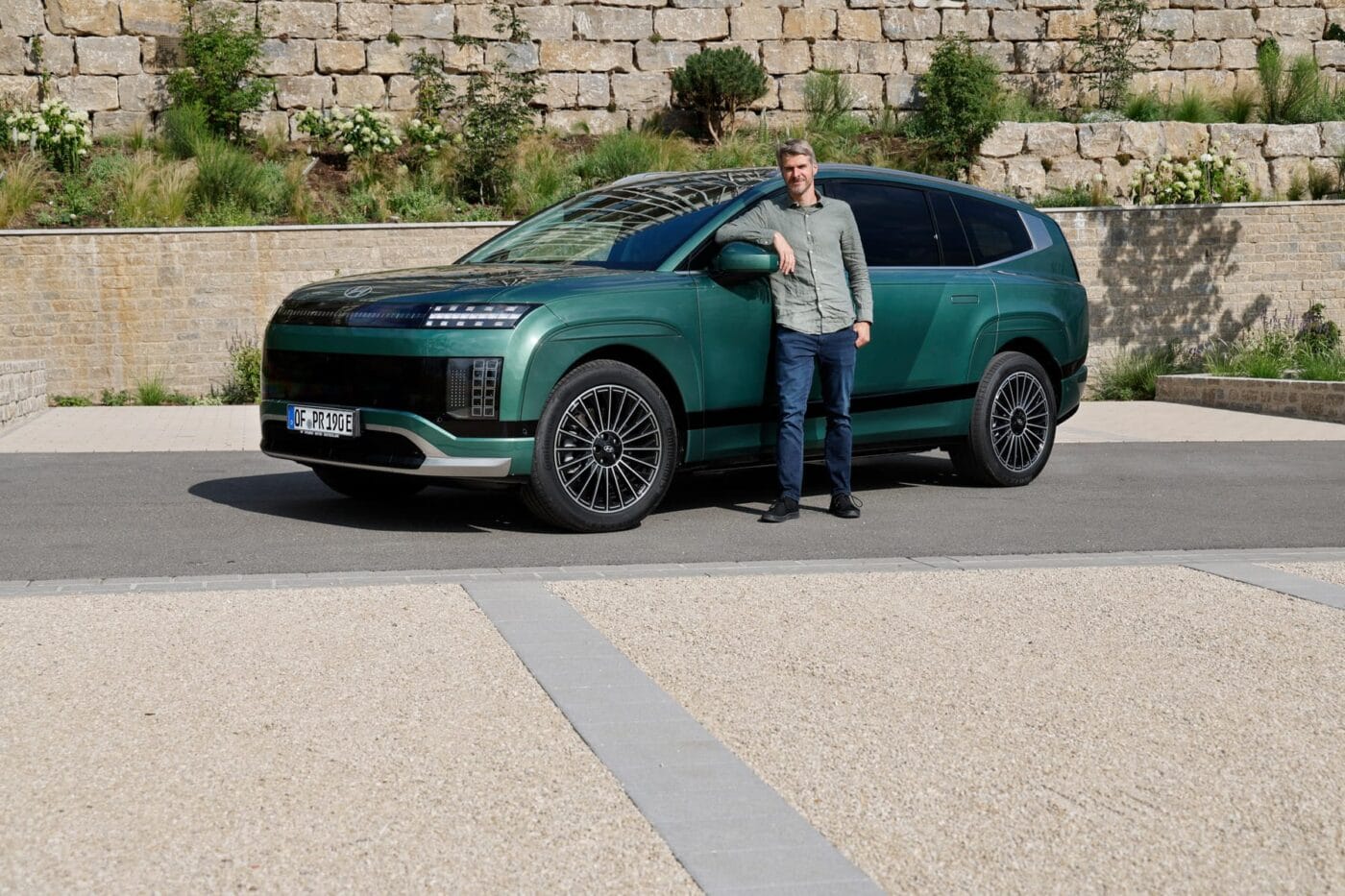
First drive in the Hyundai Ioniq 9: Plenty of comfort and even more space
Since the point of seven-seat electric SUVs in the five-metre class is often questioned, here’s a quick comparison to start: at 5.06 metres long, the Hyundai Ioniq 9 is exactly the same length as the BMW i5 Touring, one of Germany’s most in-demand electric estates. But in the BMW, there is only room for five passengers or 1,700 litres of boot volume. The Ioniq 9, on the other hand, offers up to 500 kilograms more towing capacity and, with over 700 kilograms, consistently a higher payload than the estate. And only the rear-wheel drive BMW achieves similar ranges to the less aerodynamic Korean electric SUV. Even among the all-wheel drive models, the Ioniq 9 has the edge.
There’s no question that the Hyundai is more resource-hungry: it’s roughly 200 kilos heavier and its battery is about 30 kWh larger. But it also offers more space and utility. Over its lifetime, the large seven-seat SUV with its underfloor battery remains far better than a comparable six- or eight-cylinder combustion model. With almost 2,500 litres of load volume and seven fully usable seats, the Ioniq 9 is more an alternative to an electric van in the five-metre class – except most vans lack range and none can tow 2.5 tonnes.
The Ioniq 9’s figures are extreme and not everyone needs such a large vehicle – but some do. “We don’t expect the same numbers as with the Inster,” says Hyundai Germany boss Ulrich Mechau, referencing Hyundai’s well-selling electric city car. “But there is a market for such vehicles in Germany, and we believe we can score here with a premium electric model – offering long range, high comfort, and plenty of space.”
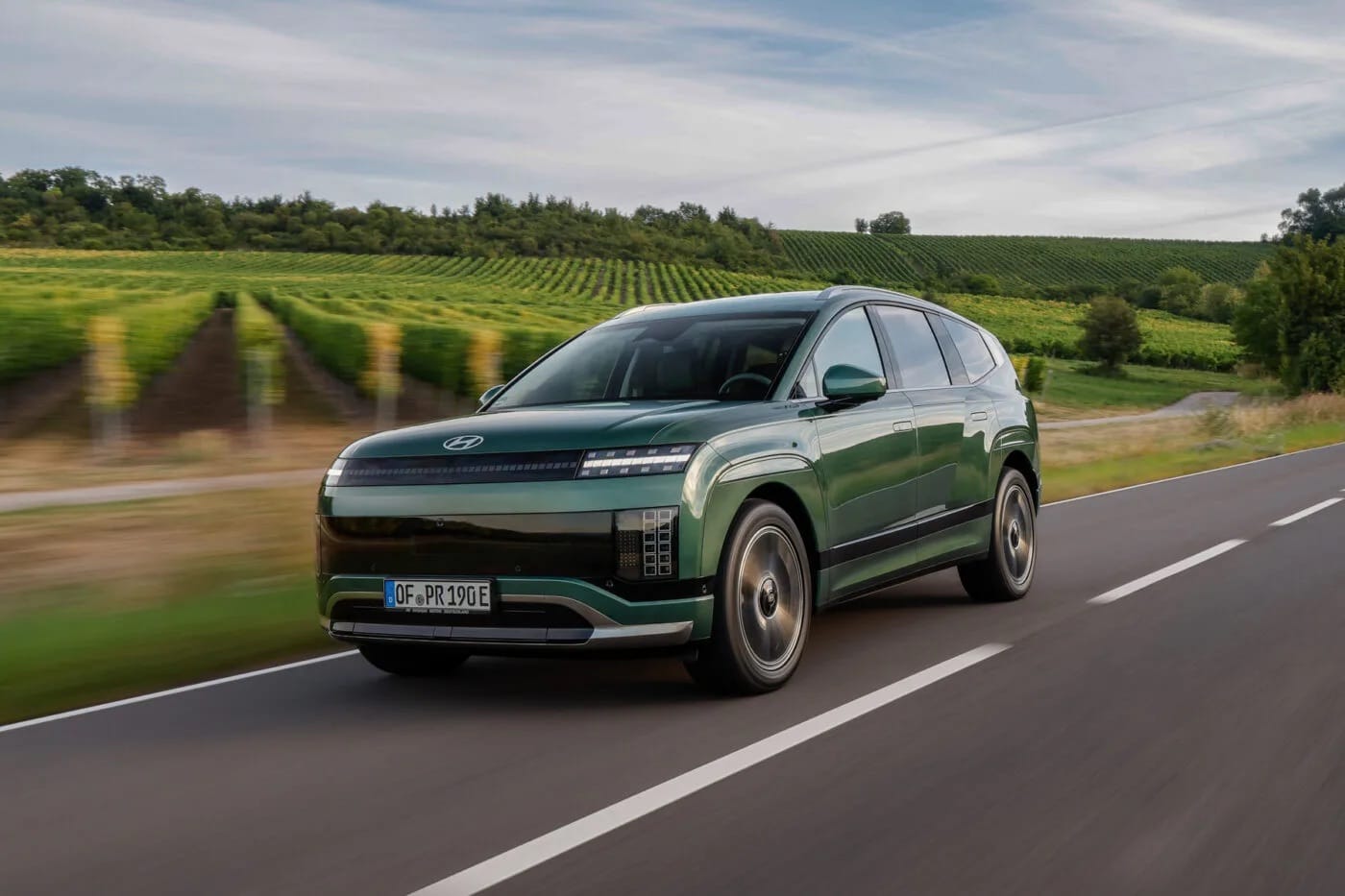
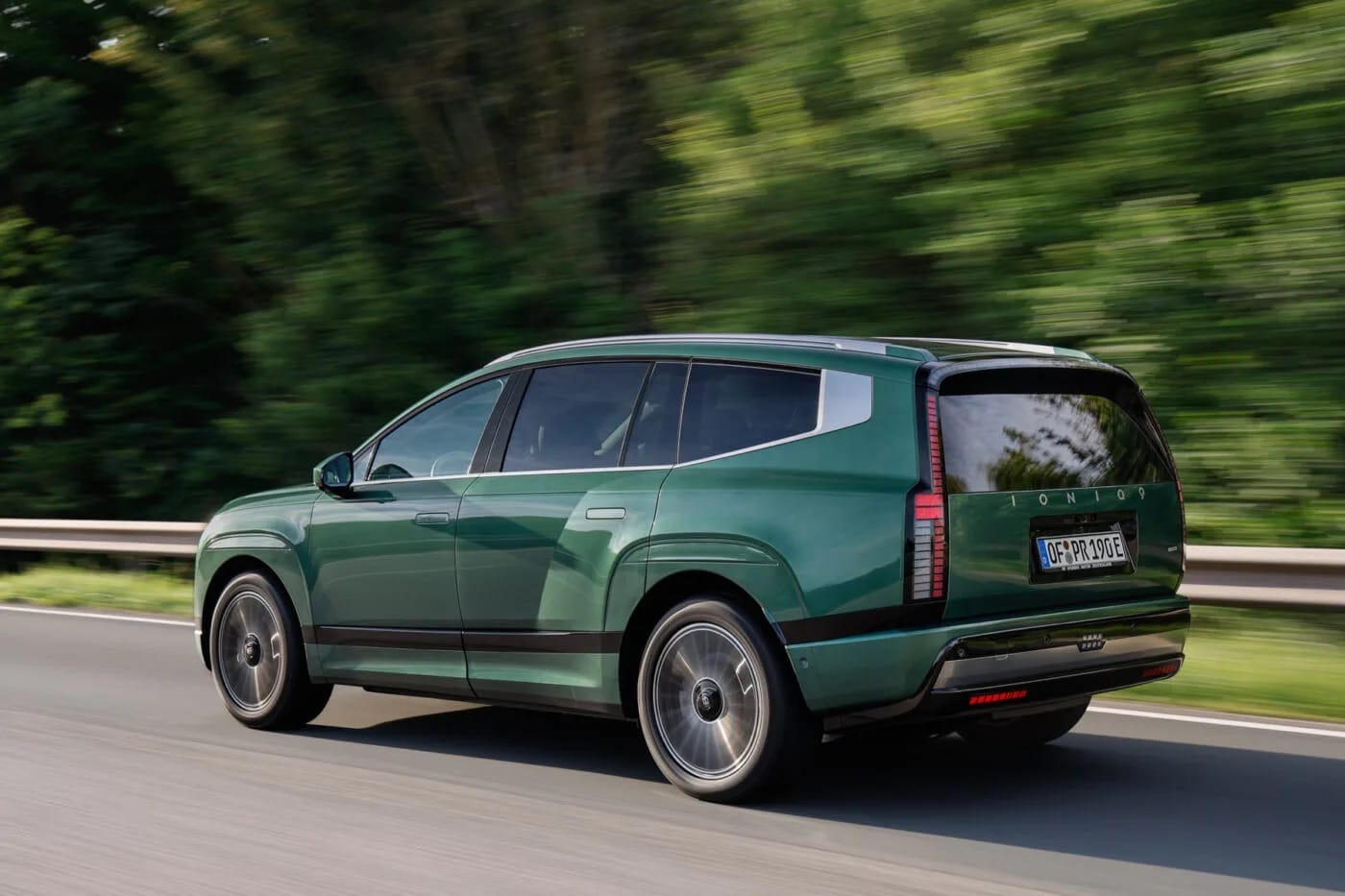
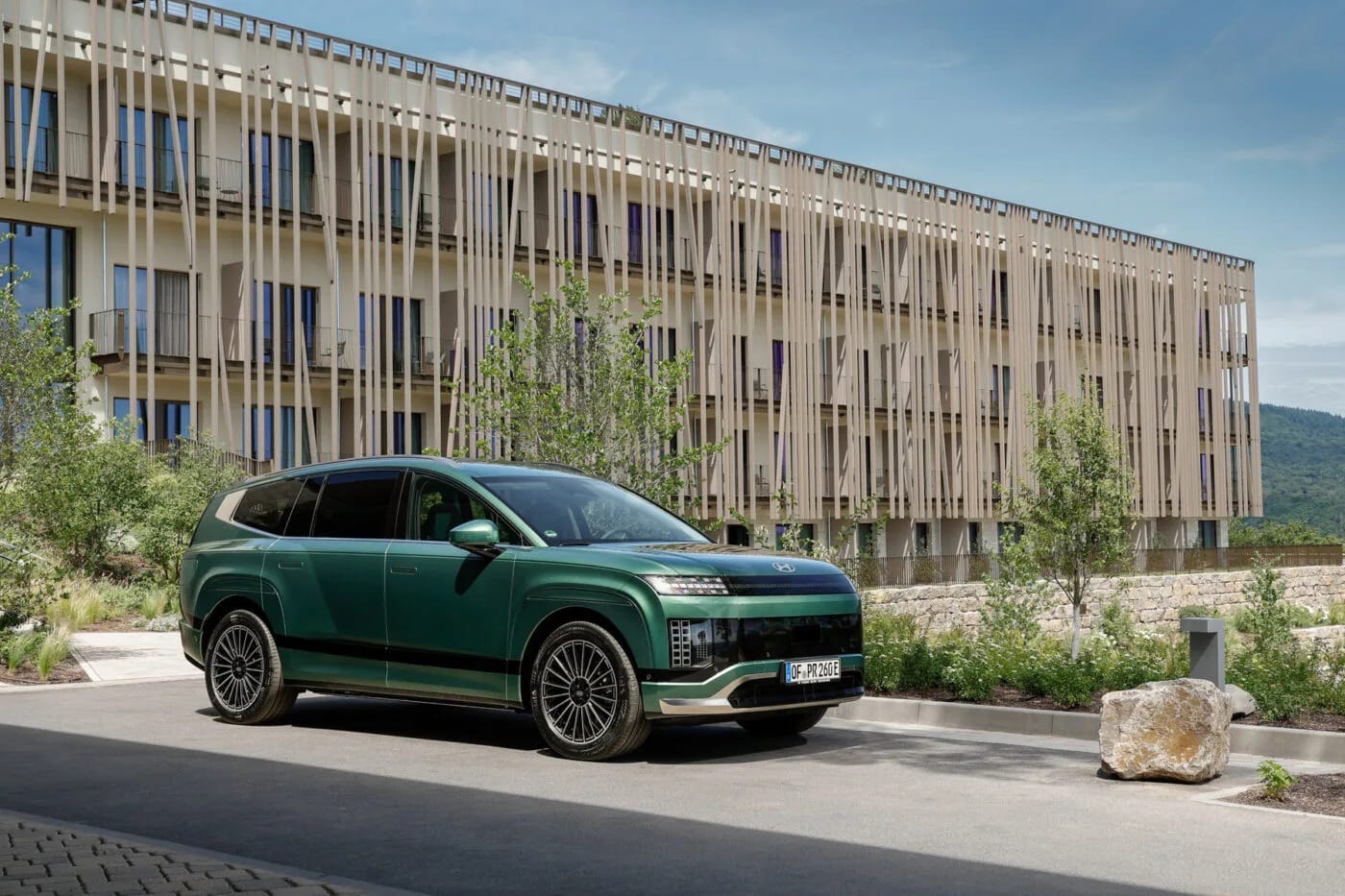
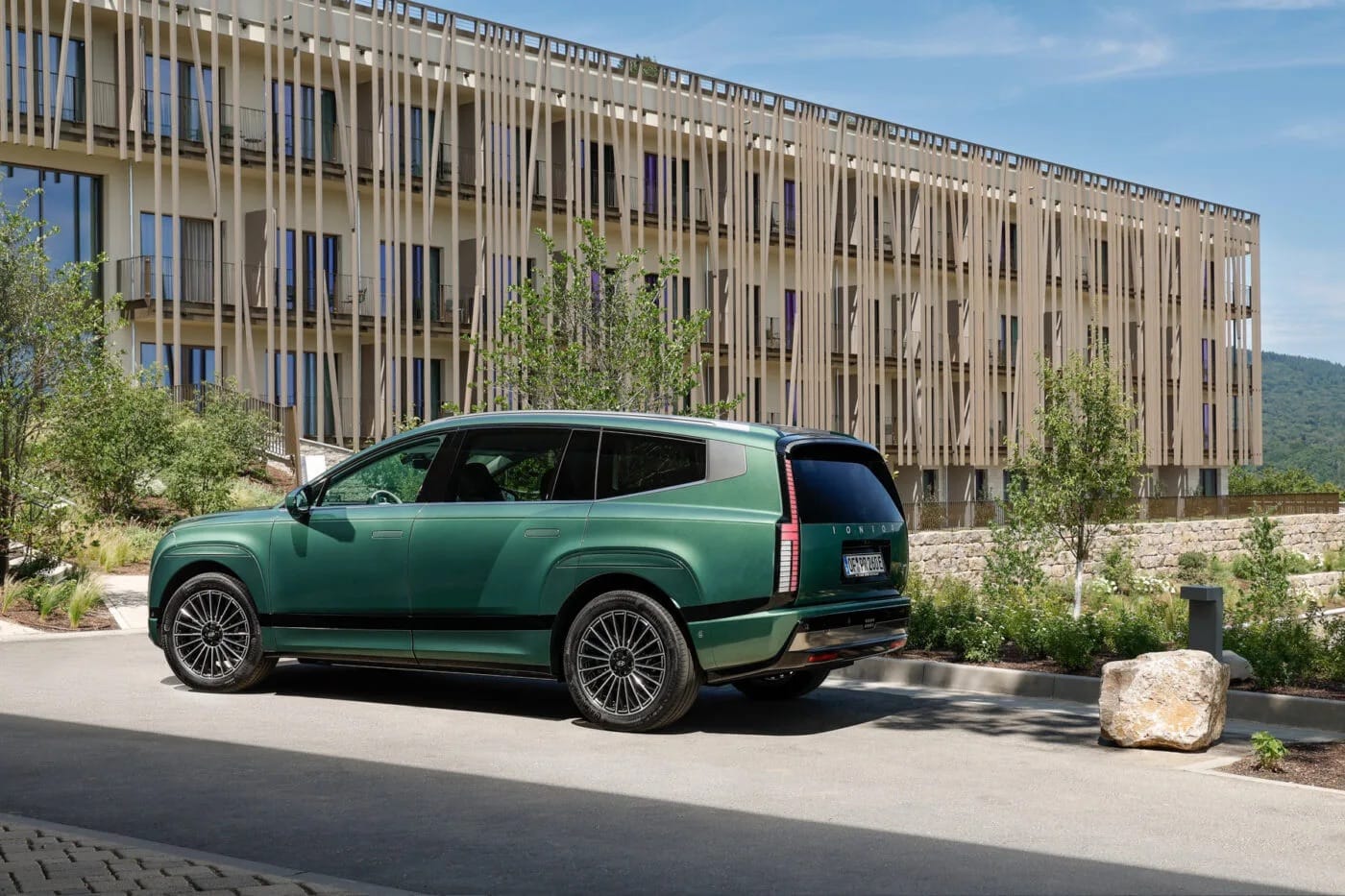
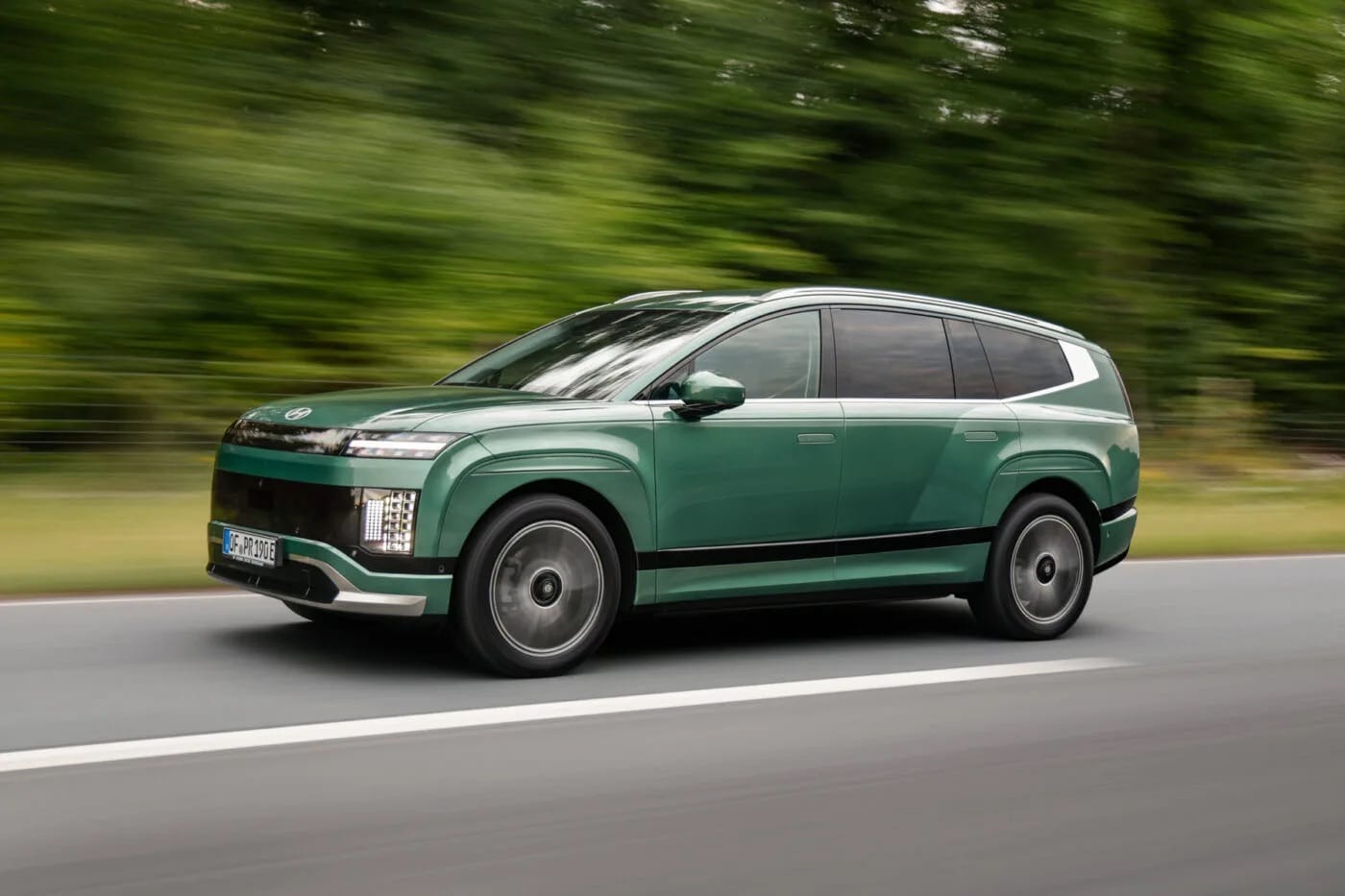
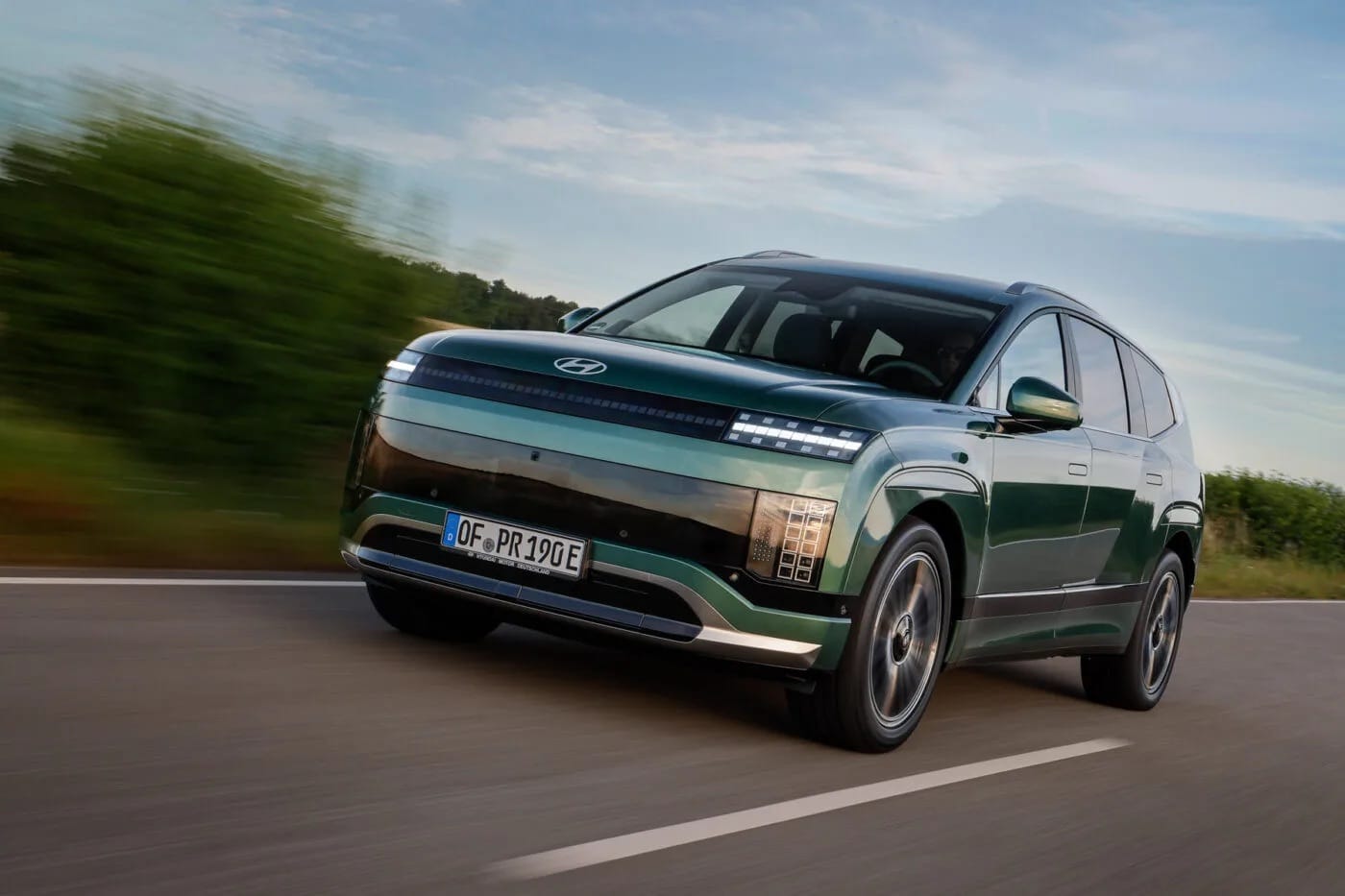
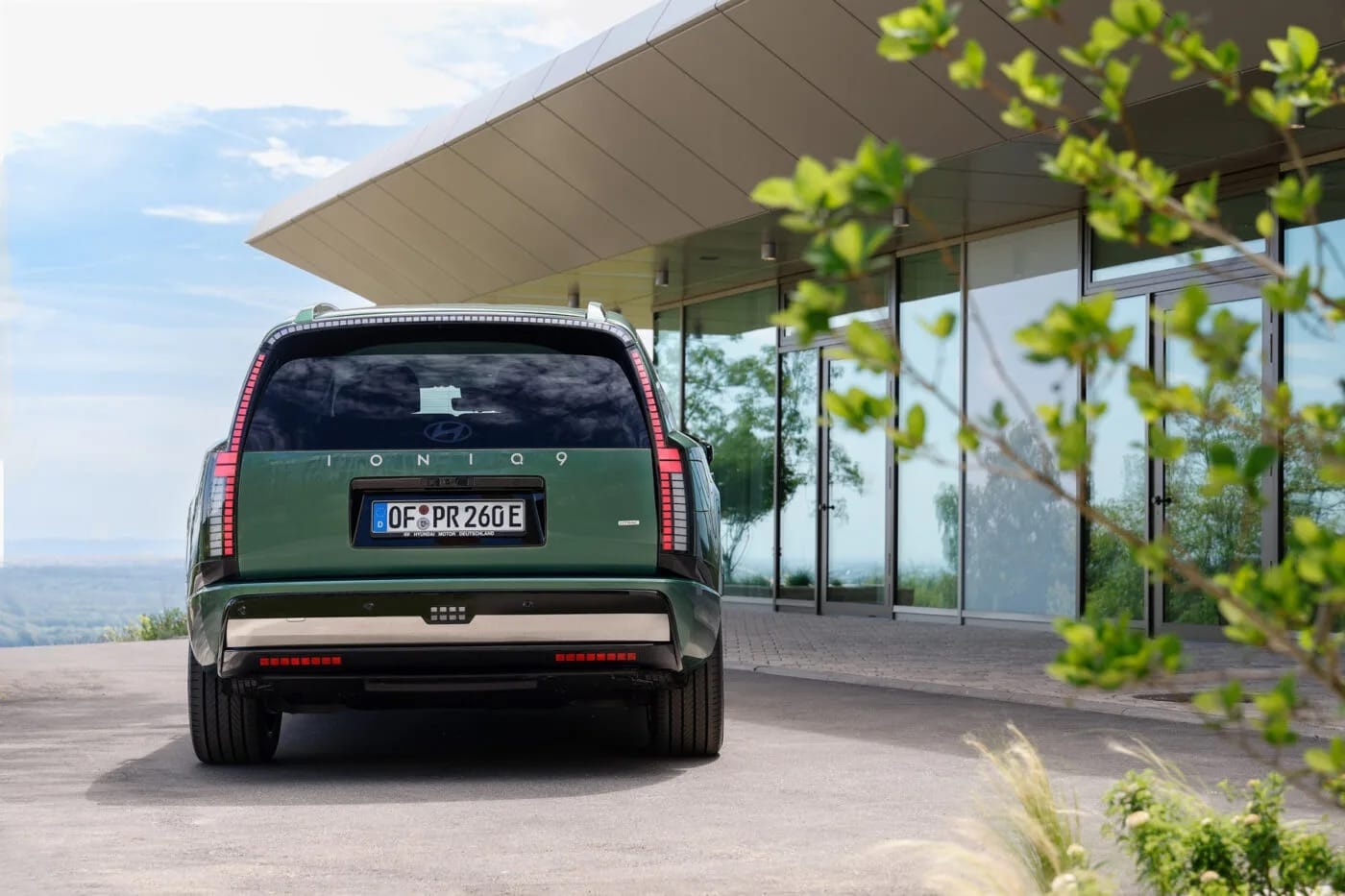
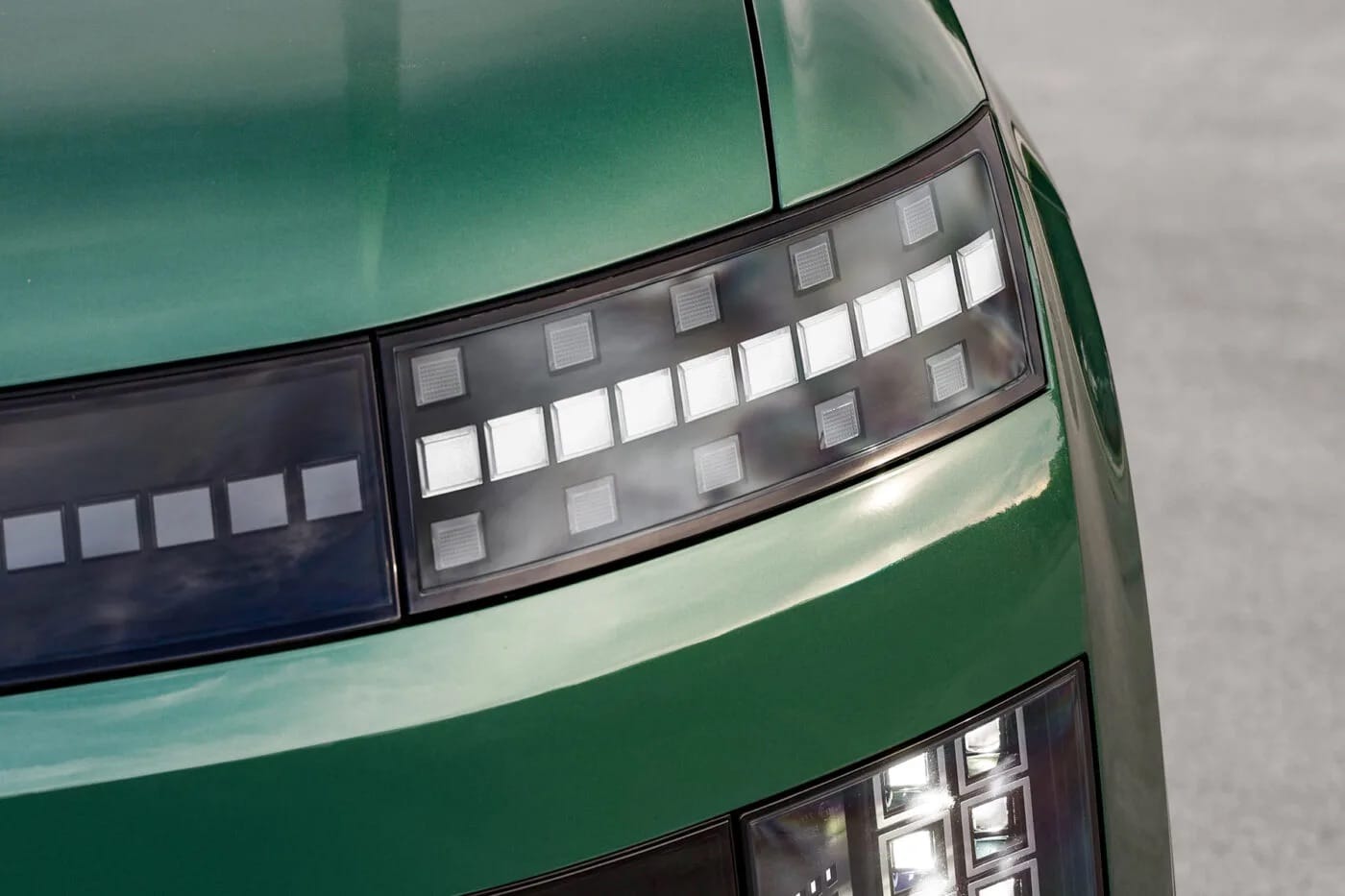
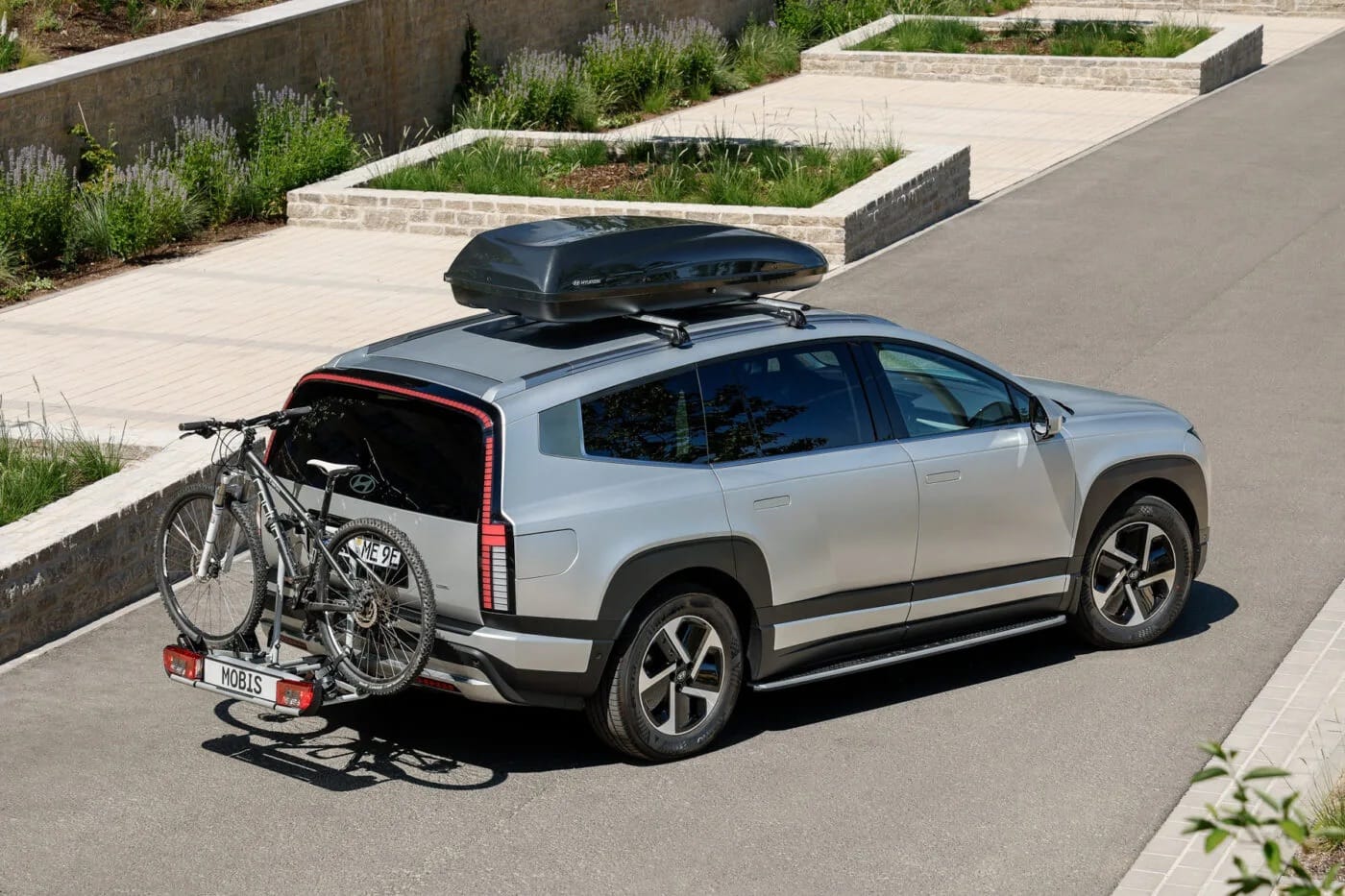
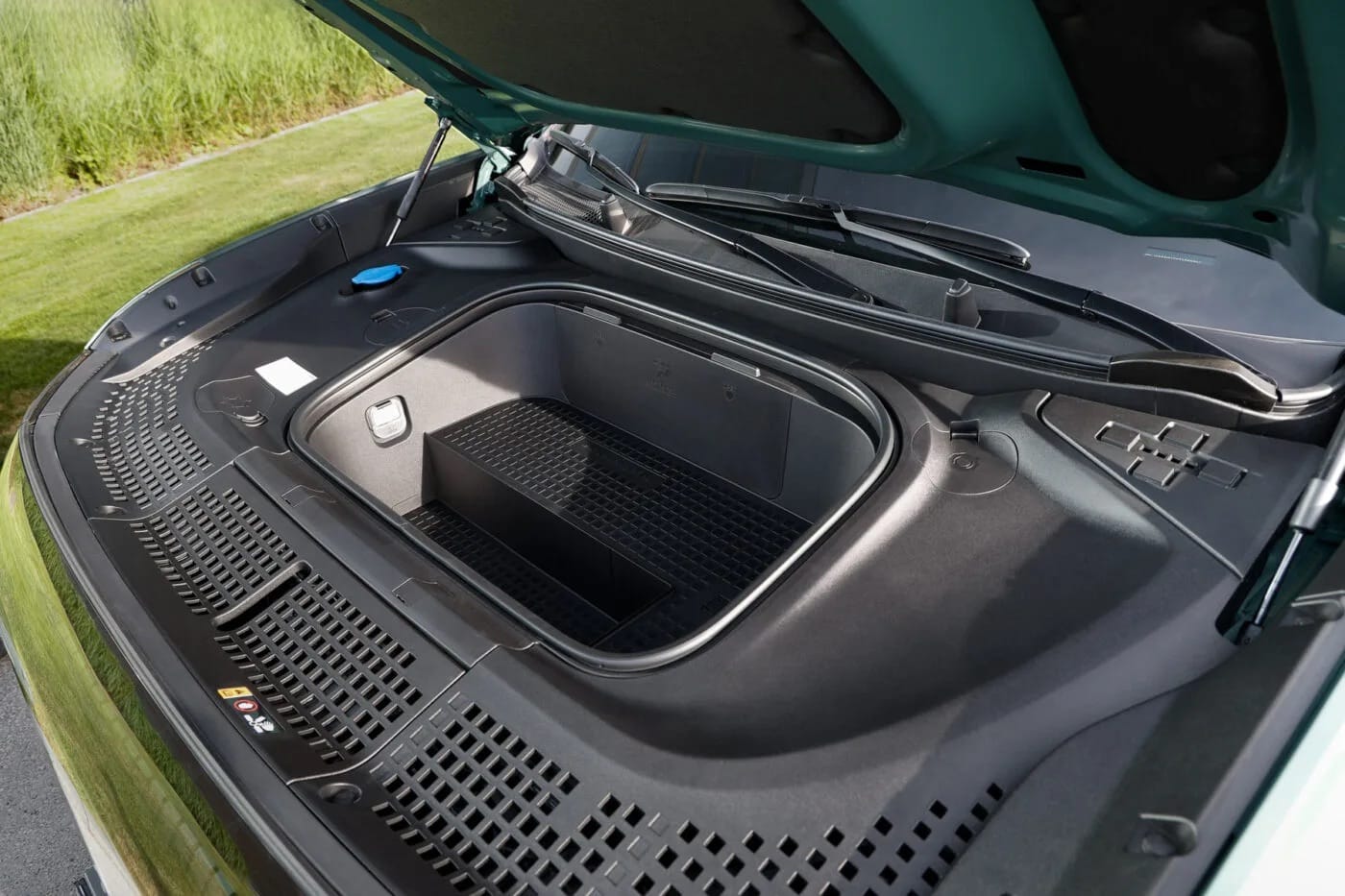
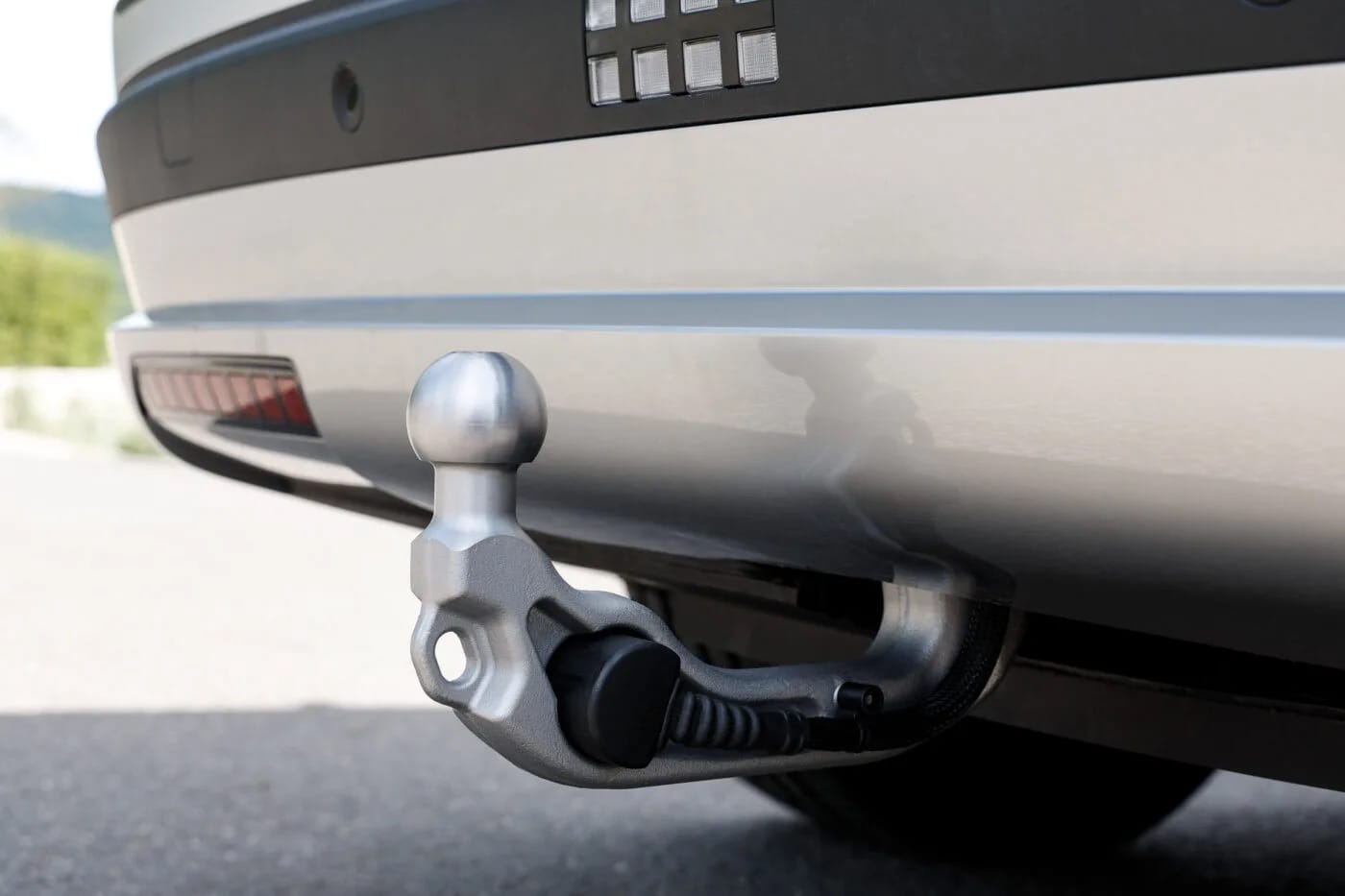
Mechau targets families and user-choosers as the main groups for the big electric SUV – those company car drivers who can choose a vehicle according to their personal and professional needs. Clearly, four out of five D-segment SUVs go to corporate customers. The Ioniq 9 will likely be no different. Hyundai thus advertises its electric flagship with a net lease rate from €449 (with around €1,500 down payment, 48 months, 10,000 km p.a.), the “0.25 per cent rule” for company car tax, and the government’s “investment booster” special depreciation.
However, with prices ranging from €68,500 for the base model to €86,750 for the 315 kW top version, Hyundai has to deliver. As Mechau rightly states, the Ioniq 9 operates in the premium segment – its rivals are no longer Opel, Ford, or VW but rather the SUV models from Audi, Mercedes, and BMW – as well as Hyundai’s own brand Genesis.
First impressions from the line-up of test cars in the car park at the driving event show just how impressive the Ioniq 9 is. With its striking pixel lights, it is instantly recognisable as an electric Hyundai. Its upright, tall front gives it a presence none of Hyundai’s other Ioniq models possess. Only Kia’s EV9 can match it here. Despite sharing the E-GMP platform, the Ioniq 9 differs in its battery: Hyundai offers only a 110 kWh pack (gross, as always with Hyundai), while the EV9 comes with either 76.1 or 99.8 kWh. There are currently no plans to offer a smaller battery in the Hyundai.
| RWD | AWD | AWD Performance | |
|---|---|---|---|
| Drive | RWD | AWD | AWD |
| Output | 160 kW | 226 kW | 315 kW |
| Torque | 350 Nm | 605 Nm | 700 Nm |
| Acceleration | 9.4 s | 6.7 s | 5.2 s |
| Top speed | 190 kph | 200 kph | 200 kph |
| WLTP range | 606 km | 606 km | 600 km |
| Battery | 110.3 kWh | 110.3 kWh | 110.3 kWh |
| Charging capacity DC | 233 kW | 233 kW | 233 kW |
| Charging time DC 10-80% | 24 min | 24 min | 24 min |
| Price | 68,500 euros | 81,500 euros | 86,750 euros |
Plenty of space and comfort inside
Even on the inside, the Ioniq 9 is a mighty car. There’s generous space, supremely comfortable seats, Hyundai’s familiar twin-display layout with digital cockpit and infotainment screen housed in a single unit, as well as some details not yet seen on other E-GMP models. The multifunction steering wheel, for instance, has been newly designed, and the dashboard is naturally larger given the car’s height. This creates room for extra storage (including a UV sanitising compartment in higher trims) and design elements partly finished in marble-look trims.
For the first drive through the Rheingau, we chose the 160 kW rear-wheel drive in mid-range Techniq trim, priced from €77,500. The €68,500 base model was not available at the driving event and, according to Hyundai Germany, will account for less than ten per cent of sales. Most customers will opt for the Techniq or the even higher Uniq trim. As for powertrains, Hyundai expects roughly 40 per cent of sales to be rear-wheel drive, another 40 per cent to be all-wheel drive, and around 20 per cent to be the performance all-wheel drive.
Our test car in ‘Serenity White’ metallic paint is a seven-seater, with a classic three-seat bench in the second row and two fold-flat seats in the third. There is no five-seat version – more on that later in the boot section. Including the panoramic glass roof, the test car costs €79,900 – quite a sum for a Hyundai. But: a Mercedes-Benz EQS SUV with a similarly large battery starts at €111,355 – and the third row costs an additional €1,900.
Real-world 500 km range feasible
With up to 620 km WLTP, the rear-wheel drive is the longest-range variant of the Ioniq 9, though the all-wheel drives at 606 and 600 km are not far behind. On our roughly 50 km loop through the Rheingau, the Ioniq 9 clearly demonstrated the benefits of electric driving: with a slight downhill section at the start, consumption stayed at 0.0 kWh/100km after seven kilometres, as it regenerated more energy than it used. Yes, a large diesel would be very efficient here too – but it could never recover energy this way. Despite climbing back up to the start point, the first loop ended with just 16.0 kWh/100km consumption. The battery dropped from 99 to only 93 per cent and the display still showed over 500 km range remaining.
Switching to the top motorisation: alongside a 226 kW all-wheel drive, Hyundai also offers a 315 kW version with up to 700 Nm torque. Whether the extra power is felt depends on drive mode: in ‘Normal’ mode the software decides which motor runs; in ‘Sport’ mode the Ioniq 9 is full all-wheel drive; in ‘Eco’ it switches to rear-wheel drive, mechanically decoupling the front PSM motor. This switch happens in milliseconds, unnoticeable in ‘Normal’ mode – but stomp the throttle and the difference between 160 kW and 315 kW is suddenly enormous.
With 160 kW and 350 Nm, the Ioniq 9’s entry model is just about adequate for a car weighing around 2.5 tonnes, albeit it underpowered. True, it’s still 218 hp, but overtaking on country roads requires thought. The sprint from 0-100 kph in 9.4 seconds shows that it doesn’t deliver the typical EV punch. The performance model with 700 Nm, more traction and a 5.2-second sprint is in another league, though arguably not essential – the 226 kW all-wheel drive with 605 Nm offers a strong middle ground.
400 km real range in the performance model
Unsurprisingly, exploiting full power affects consumption. With the 315 kW version on the Autobahn, we recorded just under 20 kWh/100km in Eco mode and just over 20 kWh/100km at cruising speed. In Normal or Sport mode with short bursts above 130 kph, consumption rose to 25 kWh/100km or more. Even so, its large battery still yields 400 km real-world range! Our second loop (65 km) averaged 22.6 kWh/100km. These are initial impressions only, not final long-range figures.
As we didn’t have time to deplete the battery fully and test charging behaviour (this will follow in a detailed review), we can only refer to Hyundai’s official data: the Ioniq 9 peaks at 233 kW charging power and charges from 10 to 80 per cent in 24 minutes. Given experiences with other E-GMP models and Hyundai’s now-functional battery preconditioning, that seems realistic. Hyundai has even published its ideal charging curve: from low states it charges at ~210 kW, rising to the 233 kW peak up to 55 per cent, then tapering in two steps but remaining above 200 kW until ~70 per cent, only dropping below 150 kW after 80 per cent. If repeatable on the road, that’s robust performance.
| RWD | AWD | AWD Performance | |
|---|---|---|---|
| Base | 68,500 euros | – | – |
| Techniq | 77,500 euros | 81,500 euros | |
| Uniq | – | 84,750 euros | 86,750 euros |
On long journeys the sat nav plans charging stops automatically, preconditioning the battery as needed. For a ~570 km trip from the Rheingau to Berlin, it scheduled two stops – 17 and 14 minutes. It acts conservatively, aiming to reach chargers with ~20-30 per cent remaining. Planning stops manually could save time, but with such a long range, other factors will dictate breaks. What needs improvement, especially in a premium car, is route calculation speed – it remains slow when planning with charging stops.
On the motorway the Ioniq 9 proves a very comfortable cruiser. Its 3.13-metre wheelbase aids straight-line stability, while ride comfort and seating position impress. Travelling in this car is simply pleasant: noise, ride and ergonomics are well sorted. Hyundai also raises acoustic comfort with 14-speaker Bose sound and active noise cancelling from the Techniq trim upwards, reducing wind and tyre noise noticeably.
Comfortable suspension on steel springs
Despite its comfort focus, Hyundai achieves a good suspension balance: its weight is felt in corners, but it remains composed on twisty roads and provides decent feedback. Given its 2.6-tonne kerb weight (RWD: 2,474 kg), handling is better than expected.
Interestingly, Hyundai opts for steel springs and conventional dampers where rivals use air suspension or adaptive dampers to bridge comfort and sportiness. Still, the Ioniq 9 doesn’t need to hide.
Yet its E-GMP platform’s volume origins show in one area: there’s no rear-wheel steering. Anyone who’s driven a Mercedes EQS with ten degrees rear steer knows how manoeuvrable a large car can be. This matters when parking – many bays and charging spots in Europe simply aren’t sized for cars like the Ioniq 9. Hyundai claims a decent 12.48-metre turning circle, but an EQS with 3.21-metre wheelbase manages 11 metres. Nevertheless, to criticise the Ioniq 9, one must compare it to Mercedes.
On narrow Rheingau village roads, its 1.98-metre width (excluding mirrors) was noticeable. Precision driving and patience for oncoming traffic were required. But if a delivery van can get through, so can the Ioniq 9. Test drives showed it’s better suited to wider country and federal roads; on narrow lanes, assistance systems intervene frequently to keep it in lane, and beeping reminders can become frequent near edge markings.
All seats suitable for adults
Inside, the Ioniq 9 builds on the spaciousness of Ioniq 5 and 6, but adds a huge boost in utility. The 19 cm sliding centre console lets you choose between open or separated layouts. The familiar display layout feels known, though it’s new. One less ideal detail: climate controls have two rotary dials but also a touch display with seat heating/cooling and steering wheel heating icons placed very low, making blind operation tricky – the facelifted Ioniq 5 solves this better with physical buttons.
The Ioniq 9 is one of few electric SUVs with a genuinely usable third row. All three rows offer over a metre of headroom; legroom is over a metre in the first two rows and still 81 cm in the back. Even in the third row, two adults can sit side by side with 1.40 metres shoulder width (vs. 1.55 m in rows one and two). At 1.85 m, I could sit comfortably in both second and third rows; at two metres, the third row gets tight.
But it’s also worth mentioning that the two rearmost seats are much easier to use in the six-seater, as you can also get in and out between the two individual seats in the second row if in doubt. In the seven-seater, the rear bench has to be folded down to reach the rear seats – and it takes a bit of climbing to reach them.
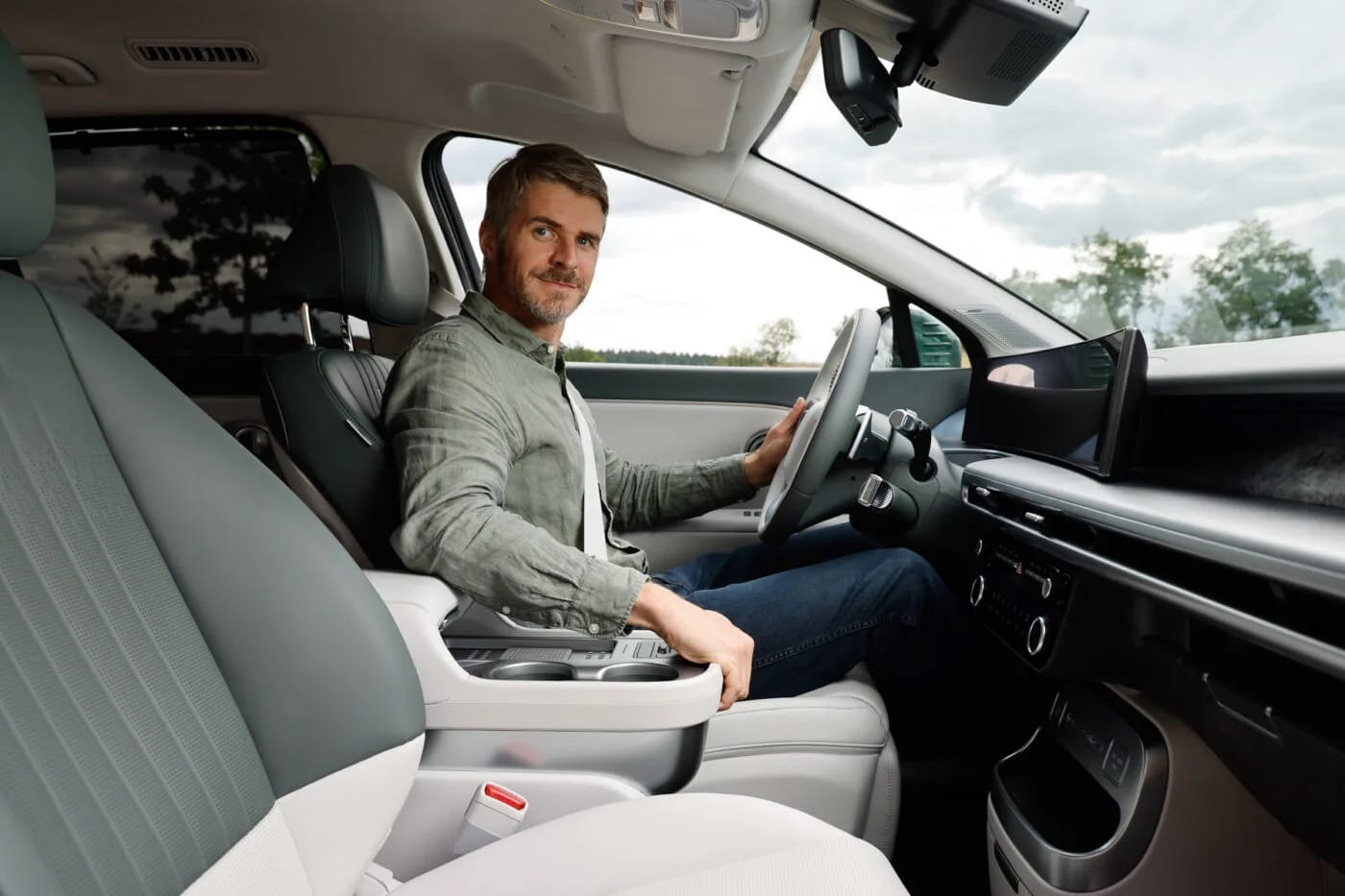
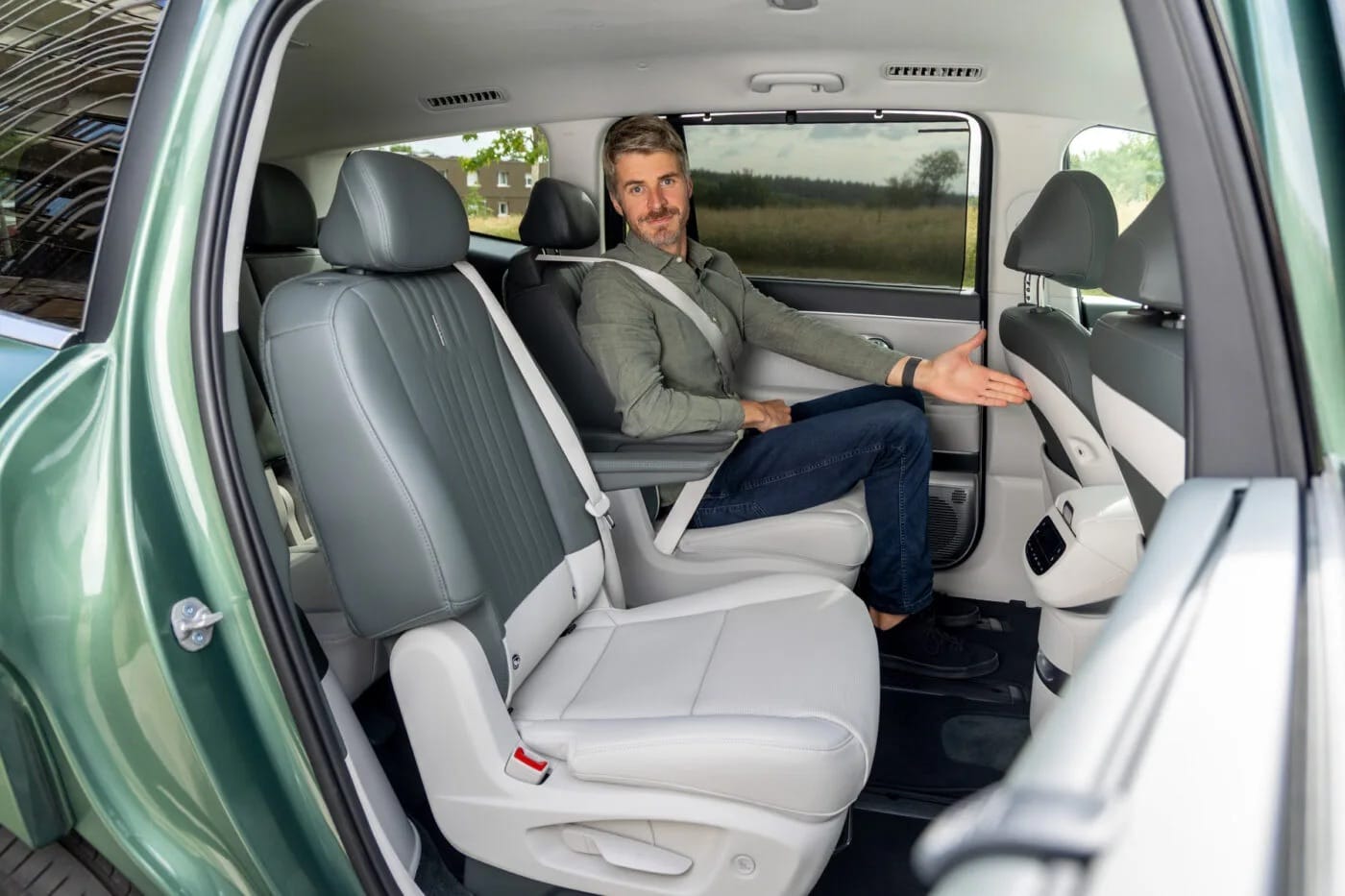
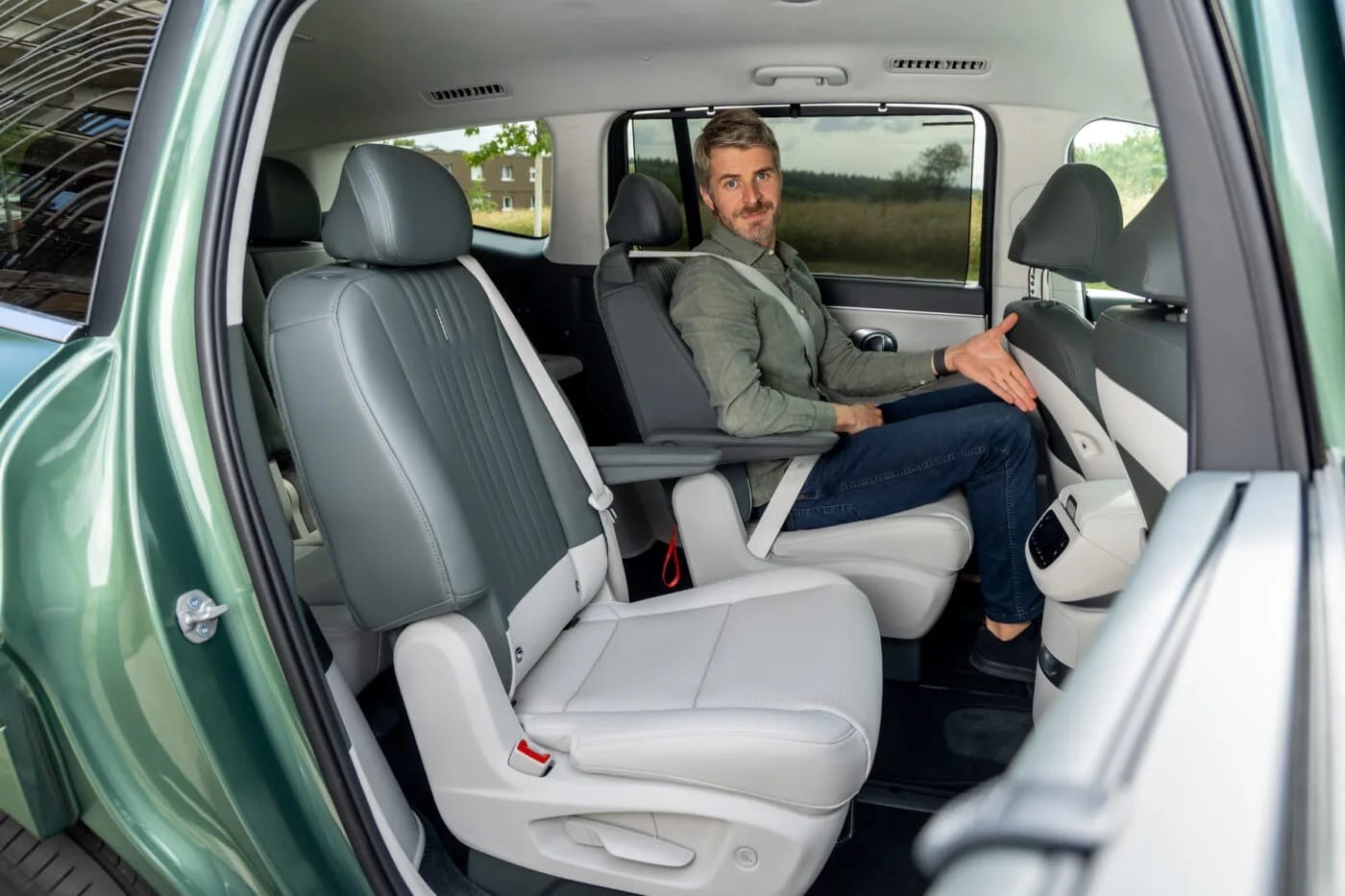
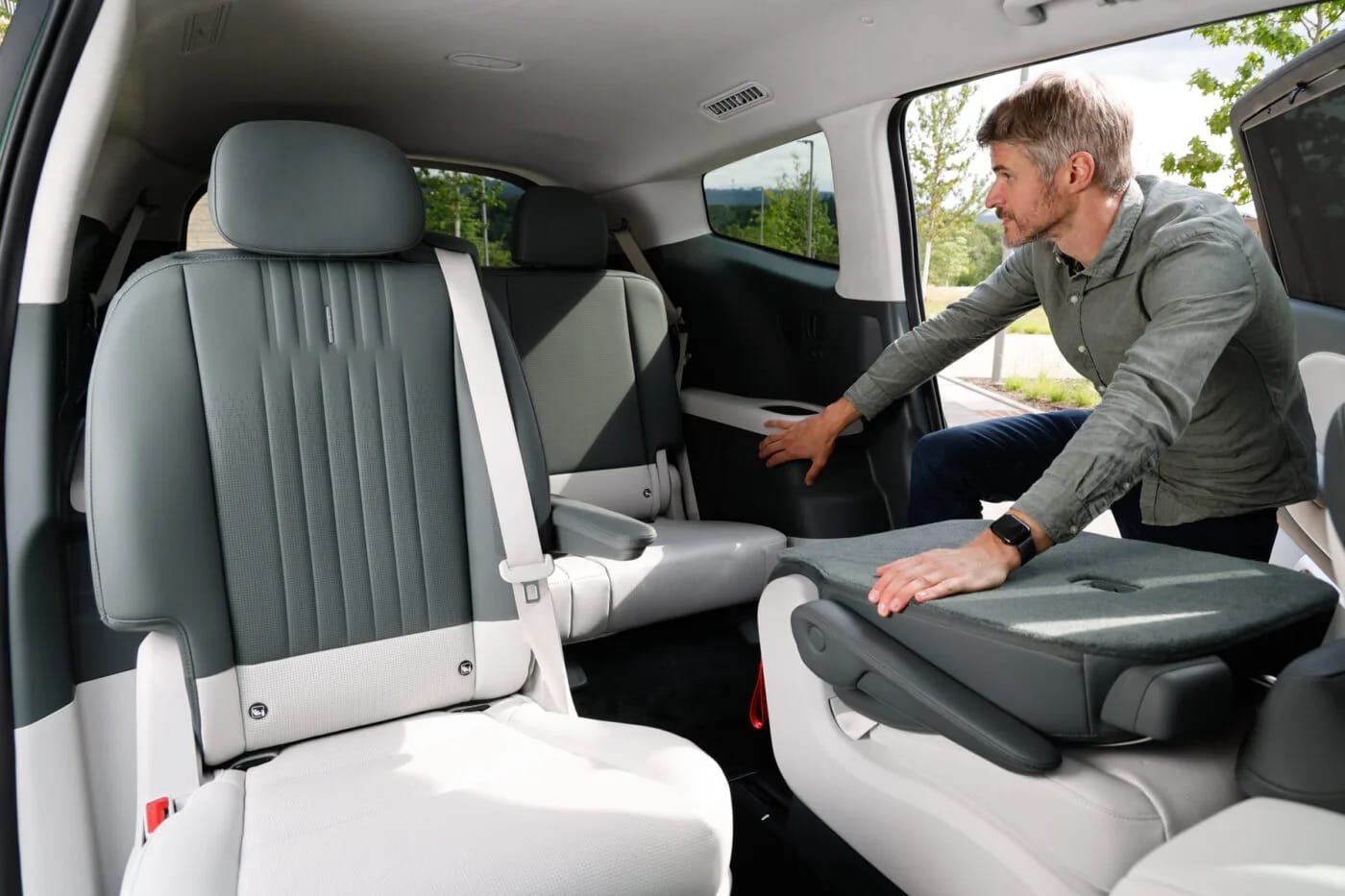
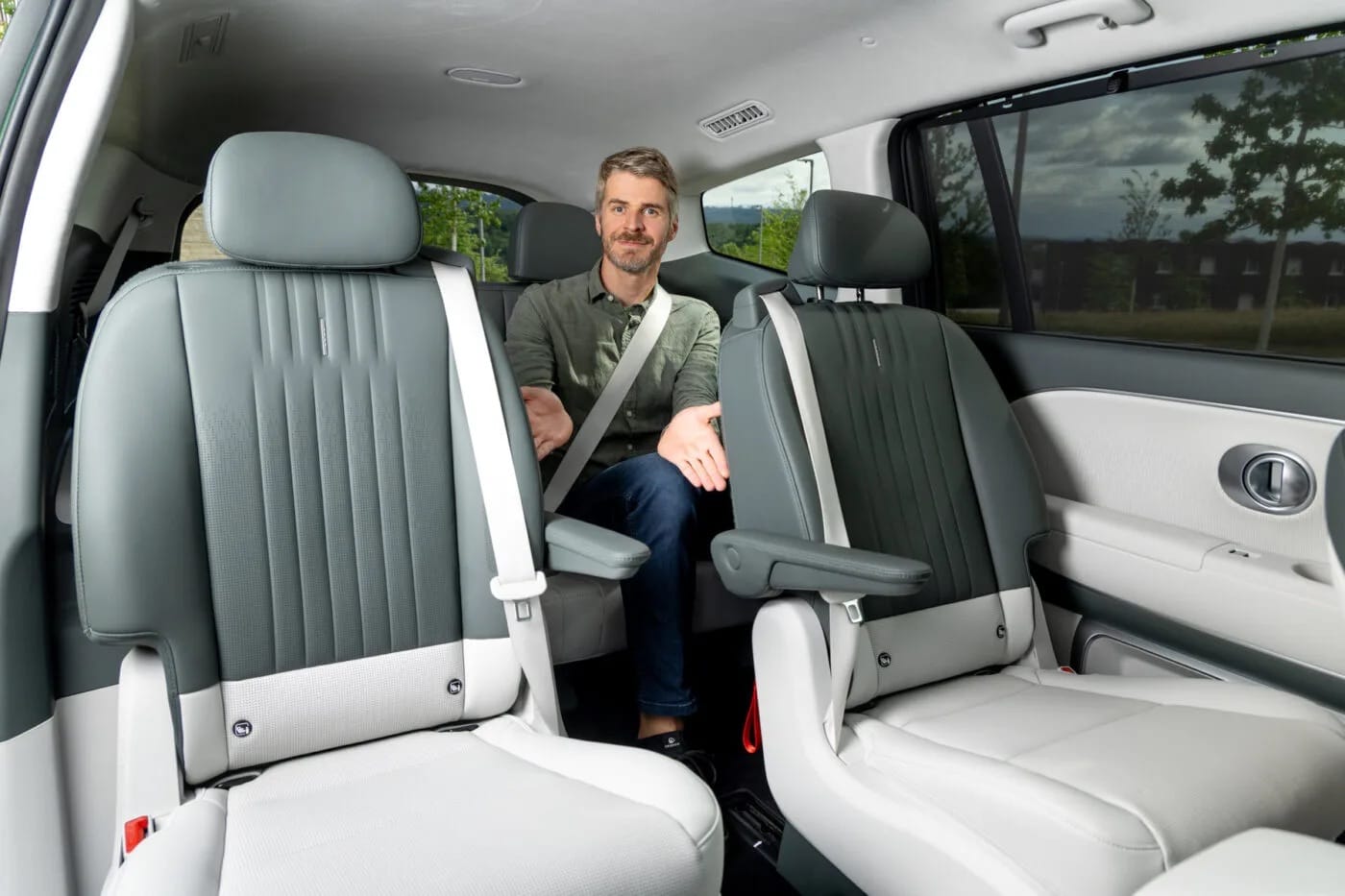
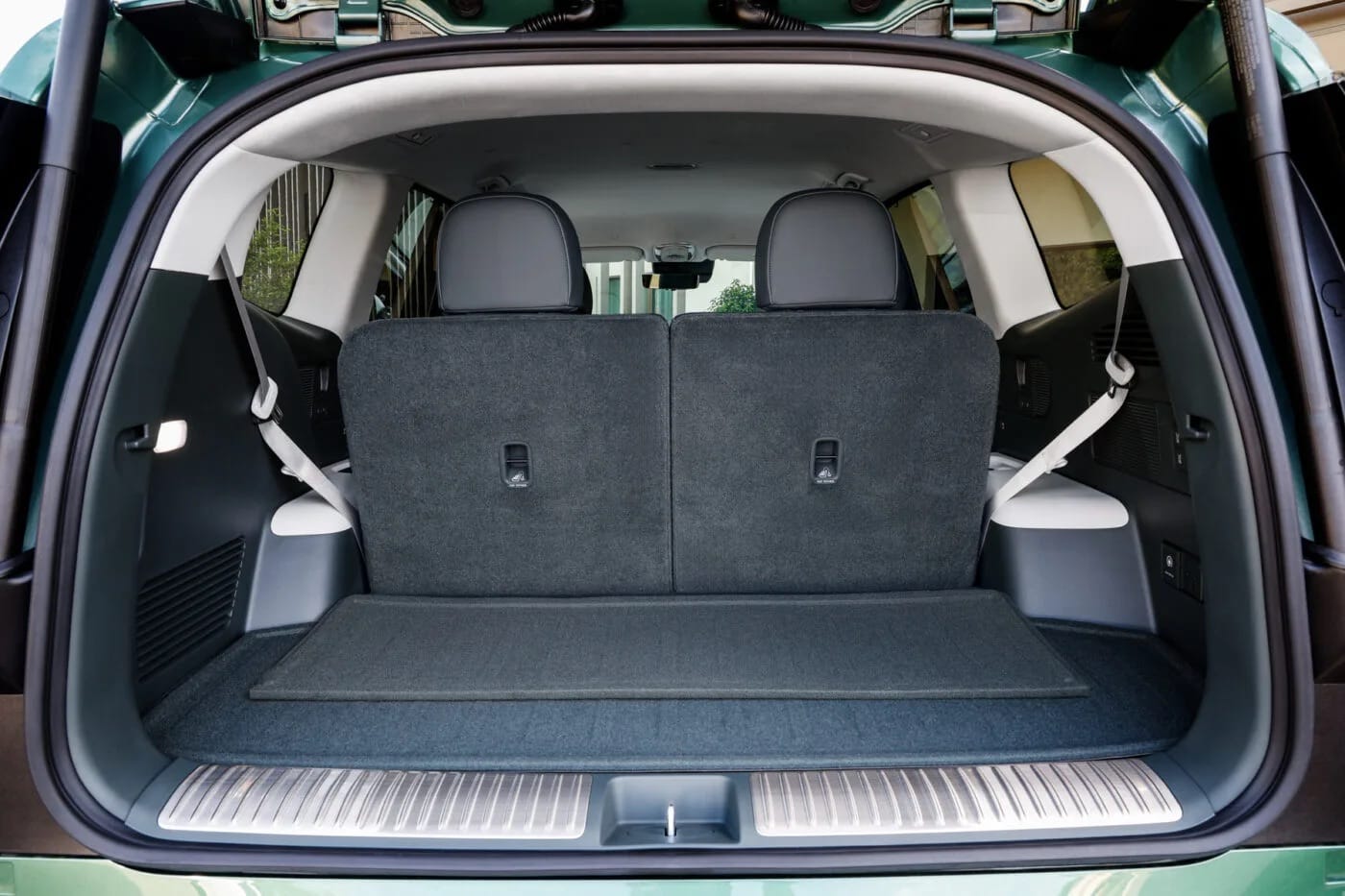

With all seats up, boot space is 338 litres. Folding the third row (electrically from the boot) raises this to over 900 litres. Important for practicality: as there is no five-seat version, there’s never a completely flat load floor; the folded third-row seats create a small gap where loose items can fall. In the six-seater, the open space between middle-row seats means luggage is not fully separated, so securing cargo is vital to prevent it sliding forward when braking.
Large and heavy loads don’t necessarily have to be carried in the boot: the towing capacity of the all-wheel drive versions is 2.5 tonnes with a drawbar load of 125 kilograms. The rear-wheel drive model can tow up to 1,600 kilograms (drawbar load: 80 kg). Up to 100 kilograms can also be transported on the roof. In terms of towing capacity, the Ioniq 9 has an advantage over many electric estates and (premium) vans.
Conclusion
Of course, the Ioniq 9 isn’t intended for everyone and it probably won’t immediately help Hyundai achieve new sales records in Germany. However, anyone looking for an electric car that combines space, comfort, towing capacity, range and charging time now has another option – one that is very expensive for a Hyundai, but significantly cheaper than many rival models. For everyone else: the Ioniq 5 is also a solid electric car. Or perhaps an electric estate – but not from Hyundai, since they don’t offer one.


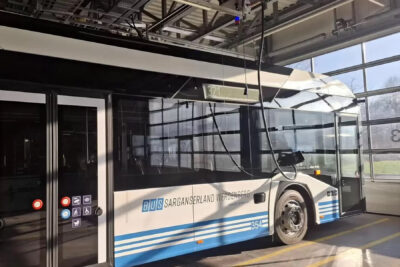

2 Comments